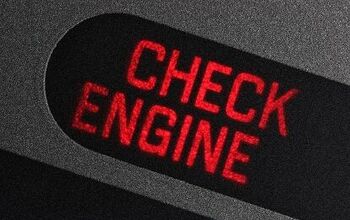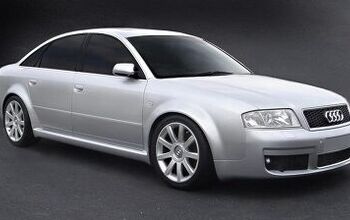Piston Slap: Deep-Sixing Unknown Friction Materials?

TTAC Commentator tonycd writes:
Hi, Sajeev! I’m a long-ago occasional TTAC contributor, occasional B&B pontificator, and longtime admirer of your column, with a question of my own.
My brother just picked up a very used ’09 Mazda6 Grand Touring V6. Lotsa horses, in need of brake service to rein them in. He’s hearing and feeling a pulsing through his brake pedal, sort of a low rhythmic moaning tone. It could be wear indicators, but more likely it’s a warped front rotor. Either way, he’s pretty confident he’s going to have to replace all the friction materials, including the rotors.
Which leads to my question: What’s a not-crappy brand of brake parts? He doesn’t want to expend all the labor on replacement, only to have them immediately warp again the first time he heats them up (which he will – especially with 274 ponies, he’s an, er, enthusiastic driver). Everybody knows Brembo, but who else sells quality?
Sajeev answers:
Doing the brakes on a used vehicle of unknown history is always a smart idea. Which is a rather huge understatement!
Several vendors make consistently good brake parts, but I doubt their superiority on a street-driven vehicle. I’ve used the cheapest rotors possible (that still met OEM design standards) with decent quality semi-metallic, ceramic or carbon-metallic pads and never had a problem.
For me, it’s more about the pad than the rotor. Even on track-focused cars, there’s a lot to like about cheaper rotors when it’s your wallet on the line.
So I doubt your brother’s recent purchase of a “very used” 10-year-old Mazda needs nothing more than new rotors made to OEM standards, ceramic or carbon metallic pads, and the proper break-in procedure applied.
Unless he does track day events every month and drives on the street like a maniac (and I mean go-to-jail maniac), he won’t have an issue. I saw no concerns about rotor thickness/warping for GEN II Mazda 6s on google: anything I found could easily be a poor choice in brake pad. This is “just” a 3,600 lb car: while Brembo has a well-deserved reputation for excellence, nobody’s perfect. Stoptech makes people happy (I’ve used Centric, the parent company’s cheap stuff, with success) and the Internet’s also kind to Powerstop.
But can you trust anyone’s opinion on aftermarket upgrades? Hell to the no: everyone’s gonna feel an improvement going from used pads/rotors to brand new ones. Even if they honestly realize there’s no improvement on public roads, will anyone swallow their pride and say “I made a mistake buying this stuff when the factory-designed bits were just as good?”
Positive internet feedback is probably the most misleading thing in our industry.
My advice: get Raybestos brake rotors and ceramic brake pads of your choice. I’d personally go for cheaper, off brand rotors, but I’d hate to be wrong with someone else’s whip.
Send your queries to sajeev@thetruthaboutcars.com. Spare no details and ask for a speedy resolution if you’re in a hurry…but be realistic, and use your make/model specific forums instead of TTAC for more timely advice.

More by Sajeev Mehta
Latest Car Reviews
Read moreLatest Product Reviews
Read moreRecent Comments
- ToolGuy First picture: I realize that opinions vary on the height of modern trucks, but that entry door on the building is 80 inches tall and hits just below the headlights. Does anyone really believe this is reasonable?Second picture: I do not believe that is a good parking spot to be able to access the bed storage. More specifically, how do you plan to unload topsoil with the truck parked like that? Maybe you kids are taller than me.
- ToolGuy The other day I attempted to check the engine oil in one of my old embarrassing vehicles and I guess the red shop towel I used wasn't genuine Snap-on (lots of counterfeits floating around) plus my driveway isn't completely level and long story short, the engine seized 3 minutes later.No more used cars for me, and nothing but dealer service from here on in (the journalists were right).
- Doughboy Wow, Merc knocks it out of the park with their naming convention… again. /s
- Doughboy I’ve seen car bras before, but never car beards. ZZ Top would be proud.
- Bkojote Allright, actual person who knows trucks here, the article gets it a bit wrong.First off, the Maverick is not at all comparable to a Tacoma just because they're both Hybrids. Or lemme be blunt, the butch-est non-hybrid Maverick Tremor is suitable for 2/10 difficulty trails, a Trailhunter is for about 5/10 or maybe 6/10, just about the upper end of any stock vehicle you're buying from the factory. Aside from a Sasquatch Bronco or Rubicon Jeep Wrangler you're looking at something you're towing back if you want more capability (or perhaps something you /wish/ you were towing back.)Now, where the real world difference should play out is on the trail, where a lot of low speed crawling usually saps efficiency, especially when loaded to the gills. Real world MPG from a 4Runner is about 12-13mpg, So if this loaded-with-overlander-catalog Trailhunter is still pulling in the 20's - or even 18-19, that's a massive improvement.


































Comments
Join the conversation
Thank you, Sajeev. My brother is most appreciative of the advice. And he gives a shout-out to Terry for the brake fluid flush advice as well.
It's important to consider how brakes function. They slow/stop a vehicle by changing the energy of the vehicle moving into heat. The mass of the brake(s) needs to be sufficient to absorb and store that heat, in the most energy intensive brake use, and not get so hot that something in the system fails. After brake use the heat can be transferred to the air. If rotors get to hot they will warp, crack, or even fall apart. Brake fluid can boil and friction materials will have much less friction when overheated (brake fade). Manufacturers are obviously trying to minimize the cost of production. A pound of cast iron not put into making the rotors, on one vehicle, will save a lot of $$$ in building 100,000 vehicles. If the rotors are too light they cannot hold the heat, until it can transfer to the air, without some sort of failure. There have been a number of models over the decades with this problem. I knew a guy that worked at a Ford dealer in the 1990s. He told me many of the 1/2 and 3/4 ton pickups were returning for warranty with pulsating brakes. The mass of the rotors had been reduced from previous model years. He said the only thing they could do was install new rotors and pads, true the rotors with an on the vehicle lathe and cross their fingers. Some trucks came back three or more times during warranty.